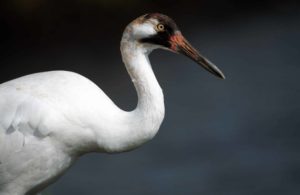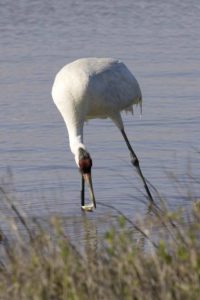
Photo: PIXNIO
Exxon’s storm water discharge plan includes draining 923 acres into the Copano Bay, Port Bay, and Mission Bay watershed. Some of that discharge will include process and equipment contact storm water. The TCEQ conducted a review under the Endangered Species Act (ESA) and identified that the whooping crane is present in the watershed. In issuing Exxon’s Draft Permit, the TCEQ Executive Director states: “the presence of the whooping crane requires EPA review and, if appropriate, consultation with the USFWS”.
So, the TCEQ is not making a determination on the impact to the whooping crane habitat. That is for the EPA. On November 17, Fish and Wildlife say they never received a Notice of the Permit application and have not discussed Exxon’s permit with TCEQ or the EPA. They haven’t even seen the application. They say it is up to EPA to review and then consult with them. On November 20, the EPA states they are just now looking at the application but it is not their job to initially review the impact on the whooping crane. EPA says TCEQ is to contact the Fish and Wildlife Service for an opinion and, if there are concerns, the EPA will then review.

Photo: PIXNIO
So, round and round we go. Meanwhile TCEQ is publishing a Draft Permit without any determination on the plant’s impact on the whooping crane habitat. Exxon should have consulted the EPA as part of their due diligence prior to filing for the permit. Instead, they paid a large fee to put this permit on the fast track. The TCEQ Public Meeting is scheduled for December 11.
Please share with any and all organizations that are dedicated to the protection of endangered species and, particularly, the whooping crane. If there is no impact, then let there be a finding of such. If there is, Exxon needs to change their storm water discharge plans or, alternatively, abandon the project. We hope to see you all on December 11.